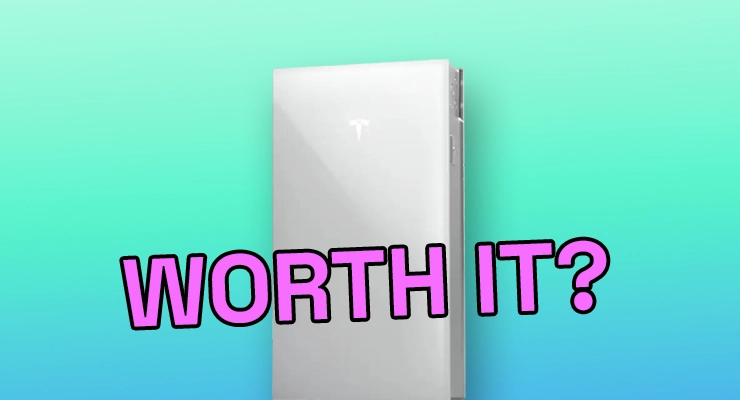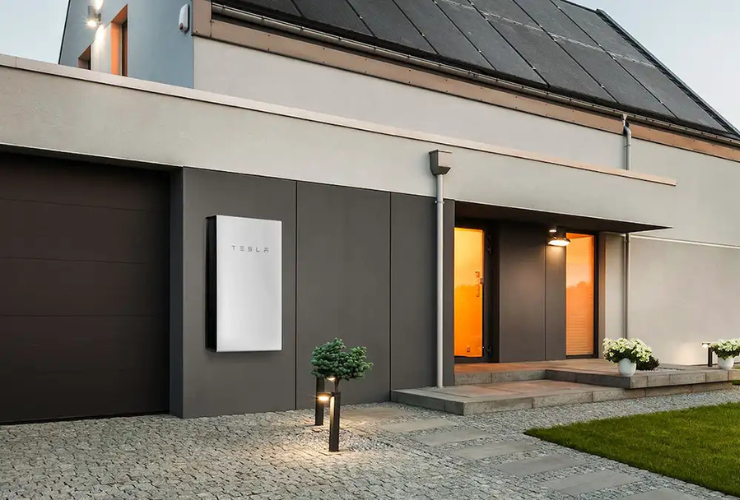Fast read
The Tesla Powerwall 3 is an all-in-one system that stores solar energy and includes an integrated solar inverter, a significant upgrade from its predecessor. With a usable capacity of 13.5 kWh and a high continuous power output of 11.04 kW, it can run major household appliances simultaneously and provide seamless backup during a grid outage. Whether it's "worth it" depends on your needs; for new solar installations, large energy users, or those prioritising backup power and a streamlined system, it's a premium and compelling option, especially with new government rebates available from July 2025.
How does a Tesla Powerwall 3 work, and is it worth it?
As Australia’s energy landscape continues to evolve, many homeowners are looking for ways to take control of their power bills and ensure a reliable energy supply. The Tesla Powerwall has become a household name in battery storage, and the latest version, the Powerwall 3, represents a significant step forward in home energy management.
This article provides an expert breakdown of how the Powerwall 3 works, its key features, and an honest assessment of whether it’s a worthwhile investment for your Australian home in 2025.
What is the Tesla Powerwall 3, and how does it work?
At its core, the Tesla Powerwall 3 is a home battery system that stores excess energy generated from your rooftop solar panels during the day. Instead of sending that valuable solar power back to the grid for a modest feed-in tariff, the Powerwall 3 saves it for you to use in the evening, at night, or during a blackout.
The most significant change from the popular Powerwall 2 is the inclusion of a built-in hybrid solar inverter. Here’s a simple breakdown of the process:
- Energy Generation: Your solar panels produce DC (Direct Current) electricity when the sun is shining.
- Integrated Inverter: This DC electricity flows directly into the Powerwall 3. Its integrated inverter can convert this energy into AC (Alternating Current) electricity to power your home or store the DC energy in the battery. This all-in-one design is more efficient as it reduces the number of energy conversions, meaning less power is lost.
- Smart Energy Management: The system, managed through the intuitive Tesla app, intelligently decides what to do with the solar energy. It can power your home directly, charge the battery, or send power to the grid.
- Using Stored Energy: When your solar panels aren’t producing power, like at night, the Powerwall 3 discharges, supplying your home with the stored clean energy.
- Backup Power: A crucial feature is its ability to provide seamless backup power. The system, along with the required Tesla Backup Gateway, can detect a grid outage and automatically switch over to battery power almost instantly. This means your lights and essential appliances stay on without interruption.
Key features of the Powerwall 3
The Powerwall 3 isn’t just an update; it’s a substantial redesign with several key enhancements relevant to Australian homeowners.
- Integrated Solar Inverter: This is the headline feature. For new solar installations, you no longer need to buy a separate solar inverter, which simplifies the system, saves space, and can reduce overall installation costs. It can handle up to 20kW of solar panel input, accommodating even large residential solar arrays.
- High Power Output: A single Powerwall 3 unit delivers a continuous power output of up to 11.04 kW in Australia. This is more than double many competitors and means it can comfortably run multiple high-demand appliances—like an air conditioner, EV charger, and pool pump—all at the same time.
- Usable Capacity and Chemistry: It offers 13.5 kWh of usable energy storage, which is generally enough to cover the evening and overnight needs of an average Australian home. The battery uses Lithium Iron Phosphate (LFP) chemistry, widely regarded for its enhanced safety, stability, and longer lifespan compared to older battery technologies.
- Durability and Weatherproofing: Built for tough Australian conditions, the Powerwall 3 has an IP67 rating for its key components, making it highly resistant to dust and water ingress. It is rated to operate in temperatures from -20°C to 50°C.
- Scalability: For homes with very high energy needs, the system is highly scalable. Up to four Powerwall 3 units can be installed for a single-phase supply. Critically, the capacity of a single Powerwall 3 can be increased with up to three dedicated Expansion Packs (each 13.5 kWh), taking a single stack’s total capacity to 54 kWh.
Is the Tesla Powerwall 3 worth the investment?
This is the crucial question for most homeowners. The Powerwall 3 is a premium product, so its value depends entirely on your specific circumstances and priorities.
The Powerwall 3 unit itself costs from $11,900, and with the mandatory Backup Gateway priced at around $1,700, the pre-installation hardware cost is in the range of $13,600 to $14,500. The final installed price typically ranges from $15,000 to $16,000 or more, depending on the complexity of the installation.
When the Powerwall 3 is likely worth it:
- For New Solar Systems: If you are installing a new solar and battery system from scratch, the integrated inverter provides excellent value, simplifying the setup and saving on the cost of a separate high-quality inverter.
- If You Have High Energy Consumption: For households that use a lot of electricity, especially in the evenings, the ability to store and use 13.5 kWh of solar energy can lead to significant bill savings and a faster return on investment.
- If You Need Reliable Backup Power: For those living in areas with frequent grid outages or who rely on powered medical equipment, the seamless and powerful backup function provides invaluable peace of mind.
- For Tech-Savvy Homeowners: If you appreciate a streamlined ecosystem and an excellent user experience, the Tesla app provides best-in-class monitoring and control of your home’s energy flow.
When you might consider alternatives:
- For Existing Solar Systems: If you already have a relatively new and high-quality solar inverter, the benefit of the Powerwall 3’s integrated inverter is lost. In this case, an AC-coupled battery might be a more cost-effective choice.
- If You Have a Three-Phase Supply: A single Powerwall 3 is a single-phase unit. While it can be connected to a three-phase property, it will only back up one of those phases during a blackout. To get a full three-phase backup, you would need one Powerwall 3 unit per phase, which is a significant investment.
- If Budget is the Primary Concern: The Powerwall 3 is positioned at the premium end of the market. There are more budget-friendly batteries available from reputable brands that offer a quicker financial payback, although they may not have the same level of power output or all-in-one functionality.
Government rebates and incentives
As of 1 July 2025, the Australian federal government’s Cheaper Home Batteries Program offers a significant incentive that can reduce the upfront cost of a Powerwall 3. The program works by providing Small-scale Technology Certificates (STCs) for eligible battery installations.
For 2025, the program provides 9.3 STCs for every usable kilowatt-hour (kWh) of battery capacity. For a 13.5 kWh Powerwall 3, this could equate to a point-of-sale discount of over $4,500, depending on the market value of STCs at the time of purchase. While the government often uses “around 30%” as a guideline for savings, the actual rebate is based on this STC calculation.
It’s important to note how this new federal program interacts with state-based schemes:
- NSW: The upfront installation discount under the state’s Peak Demand Reduction Scheme (PDRS) will end on 30 June 2025, to avoid overlapping with the new federal program. However, a separate and enhanced NSW incentive for connecting a battery to a Virtual Power Plant (VPP) will be available and can be combined with the federal rebate.
- QLD: The state’s “Battery Booster Program” has closed to new applicants, meaning residents will now rely on the new federal program.
- VIC: The Solar Homes interest-free loan program for batteries has closed to new applications. Victorian households will now primarily use the federal rebate for new systems.
The final verdict
The Tesla Powerwall 3 is an exceptional piece of engineering that elegantly combines a solar inverter and a powerful battery into a single, robust unit. Its high power output, seamless backup, and trusted brand name make it a top-tier choice in the Australian market.
For homeowners starting their solar journey, building a new home, or wanting a powerful, integrated system with reliable backup, the Powerwall 3 is absolutely worth the premium price. However, for those on a tighter budget or with existing, high-quality solar systems, exploring other reputable battery alternatives may provide a better financial return.
Before making a decision, it’s always recommended to get quotes from accredited installers who can assess your specific energy needs and help you compare the long-term value of different systems.





